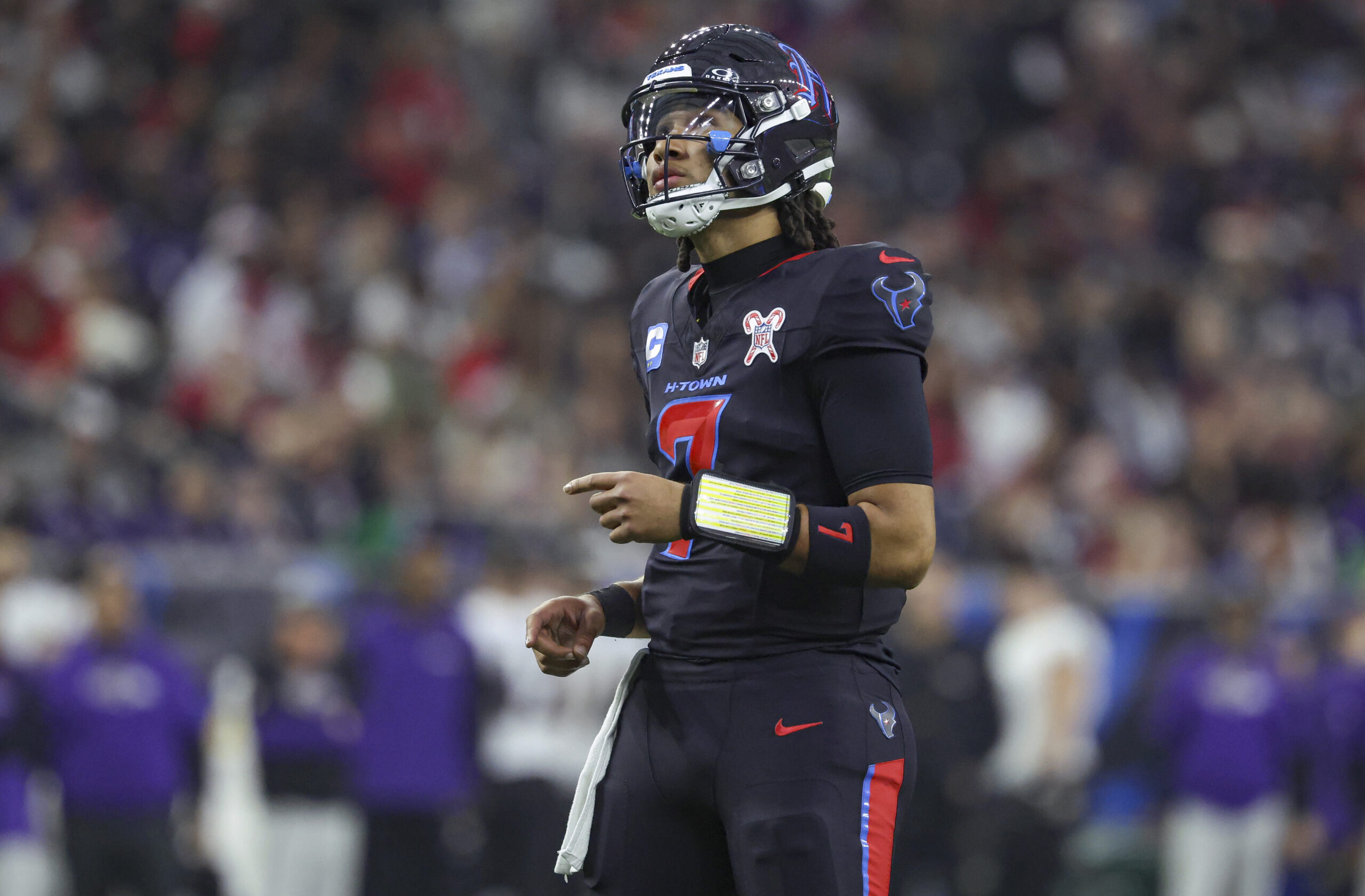NFL Analysis
4/3/24
6 min read
Texans' Trade for Stefon Diggs Vaults Them Into AFC Contention

It’s nice to have a star quarterback on a rookie deal. Aside from the on-field benefit that caliber of quarterback provides, it allows teams to be aggressive with additions to take advantage of the contract’s cheap years.
That’s what the Houston Texans have been doing this offseason, and that continued when they traded for Stefon Diggs on Wednesday. Houston acquired the former Buffalo Bills wide receiver, along with a 2025 fifth- and sixth-round pick, for a 2025 second-round pick.
Houston took advantage of Diggs' deteriorating relationship with the Bills. For the 2024 season, Buffalo will take on $31 million in dead money and lose a net of around $3 million in space, as opposed to what it would have cost to keep Diggs.
Buffalo losing $3 million in cap space to move a player and be left with a receiving corps of Khalil Shakir, Curtis Samuel and possibly a first-round pick should not be overlooked in this fallout. That’s one of the risks with Diggs, a player who has used dissatisfaction to get traded twice.
But that does not mean this is a bad move for the Texans. This is a fairly low-risk deal that potentially gives Houston one of the league’s best receiving trios.
Diggs Will Make Houston Better
Diggs will cost Houston $19 million guaranteed this season, $18.5 million in 2025 and $3.5 million guaranteed next March.
An average salary between $18-$19 million per year would place Diggs right between Chris Godwin and Diontae Johnson as the 16th-highest-paid wide receiver by AAV. Diggs’s original contract extension placed him as the fifth-highest-paid receiver.
Diggs' performance dropped in the second half of the 2023 season, and that could be a concern for a 31-year-old wide receiver, but it wasn’t completely on him. He dropped from 2.37 yards per route run in the first 10 games with offensive coordinator Ken Dorsey to 1.139 in seven games under Joe Brady, per TruMedia.
His aDOT stayed about the same (10.56 to 10.02) and he split the same time between the slot and out wide, but his usage shifted. Diggs ran more screens and go routes while his slants were cut in half.
On top of seeing more man coverage on the outside in the second half of the season (31.7 percent of routes to 37 percent), he had a much higher degree of difficulty.
That shouldn’t be an issue in Houston. Paired with Nico Collins and Tank Dell, the Texans could have a trio of receivers who move all over the field and can be interchangeable in the formation.
Collins lined up outside on 82.4 percent of his routes but had a slightly higher-yards-per-route-run figure from the slot (3.16 to 3.10). Dell was wide on 75 percent of his routes and was better there with 2.68 yards per route run, compared with 1.12 from the slot.
Adding Diggs shouldn’t cut into Dell and Collins’ workload. Collins was second in the league by yards per route run but only had a team target share of 19.3 percent. Dell had 13.3 percent while playing just 11 games. Robert Woods is the receiver whose involvement will be cut the most. He was second on the team with 415 routes and had a 13.3 percent target share.
Having three receivers who, when healthy, should be on the field could present a fundamental shift in Houston’s personnel tendencies.
Changing Philosophies
Last season, the Texans had the 10th-lowest rate of 11 personnel, sticking more with the Shanahan-style 21 personnel they used on 21.9 percent of offensive plays, which ranked fourth.
Even with the high rate of 21 personnel, C.J. Stroud was one of the most receiver-heavy passers last season. Of Stroud’s attempts, 63.5 percent targeted wide receivers, which was the seventh-highest rate in the league. Stroud's 317 wide receiver targets tied for 10th most in the league.

We could see the Texans look more like the Los Angeles Rams/Cincinnati Bengals versions of that offensive tree — they ranked first and fifth in the rate of 11 personnel.
How Houston approaches that shift could affect how defenses match up. Last season, the Texans used their heavier formations and leaned on early-down runs to pull teams out of two-high. Stroud faced the ninth-lowest rate of middle-of-the-field open coverages on first and second down.
However, Stroud was much better against two-high. On early downs, Stroud averaged 0.22 EPA per play against two-high and -0.09 against single-high coverages.
With Diggs in the mix, the Texans could have the advantage both ways. If defenses want to add that extra defender in the box, there are three receivers who could beat single coverage. But if defenses want to play in those two-high shells, Houston can use the running game, which should be a bit better than last season, or the team can still take advantage of Stroud’s efficiency against those coverages.
Diggs has also been one of the league’s best vertical threats throughout his career. That will mesh well with Stroud, who was one of the NFL’s best deep passers during his rookie season when he ranked third in EPA per play on throws of at least 20 air yards.
The Texans are giving themselves more answers to potential problems. Diggs does not have to be a star to accomplish that.
How Legit Is Houston?
Houston has approached the entire offseason aggresively. The Texans have built a well-rounded roster. Last season’s defense was missing some pieces, and the additions of Azeez Al-Shaair, Danielle Hunter and Denico Autry can help fill those gaps. Diggs fills out the receiver group, making the offense more versatile and dynamic.
It’s easy to get overexcited for this Houston team, but it’s just as easy to see this turn the Texans into one of the AFC’s top contenders. While most of the teams in contention had to chip away from their rosters, the Texans took advantage and bulked up.
The Kansas City Chiefs traded L’Jarius Sneed; the Miami Dolphins lost Christian Wilkins and had to part with some of their offensive linemen; and the Baltimore Ravens had a number of key pieces depart. Trading Diggs was just the most recent move from the Bills’ cap and roster reset.
This doesn’t make the Texans the AFC favorite, but it makes them one of the most interesting teams in the conference.
Per DraftKings, the Texans are +1600 to win the Super Bowl, which still puts them behind the Chiefs, Ravens, Bills and Bengals in the AFC. They’re +850 to win the conference, behind those four teams.
There’s a lot to like about the Texans.
This offseason has been great, with the Diggs trade as the best example of the team being opportunistic when the timing is right. Houston is doing what it can to build around a star quarterback in his second season.
That doesn’t guarantee success, but it puts the Texans in a position where the best-case scenario is quite good.
We’ve seen teams fail to act in this stage of the building process. If Houston fails, it won’t be for a lack of effort.







